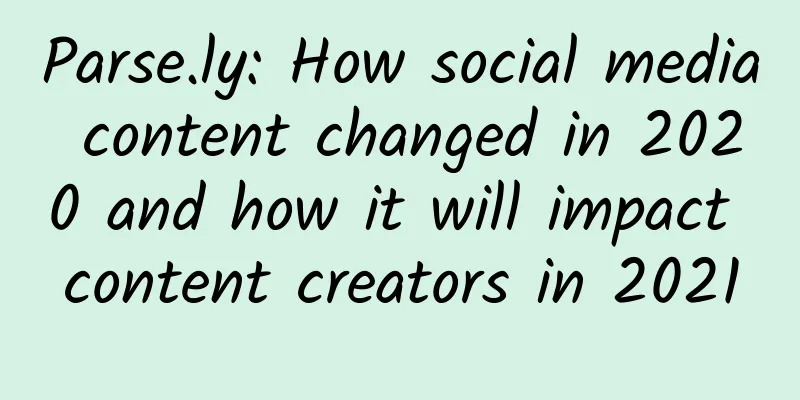Medical Biotechnology | If Zhou Bingyi had used tumor immunotherapy, the ending of "The World" might have been more satisfactory‧‧‧‧‧‧

|
The recent hot TV series "The World" ended with a happy but slightly regretful ending, which only mentioned that Zhou Bingyi had advanced gastric cancer and Hao Dongmei was by his side during his last days. If the story was set in the present, Zhou Bingyi would have used the latest tumor immunotherapy, and perhaps his life would have been extended by a few more years or even more than a decade, and he would have lived a happier life. Tumor immunotherapy is another milestone in the history of human anti-tumor treatment, bringing hope and miracles to tumor treatment. It not only cured the tumor of former US President Carter, but also made the cancer cells of Emily, a 7-year-old girl with acute lymphoblastic leukemia, disappear. It is the fourth type of anti-tumor treatment method that has been proven to have significant clinical efficacy and advantages after surgery, radiotherapy and chemotherapy. What exactly is tumor immunotherapy? What are its application prospects? Development direction of tumor treatment Tumor immunotherapy refers to the application of immunological principles and methods to specifically remove tiny residual tumor lesions, inhibit tumor growth, and break immune tolerance by activating immune cells in the body and enhancing the body's anti-tumor immune response. The key to tumor immunotherapy is to overcome tumor immune escape and reawaken the body's immune cells to eliminate tumor cells. Due to its small side effects and obvious therapeutic effect, it is gradually becoming the development direction of future tumor treatment. In 2013, tumor immunotherapy was rated as the top ten scientific breakthroughs by Science magazine. In 2018, James Allison and Tasuku Honjo, two pioneers of tumor immunotherapy, won the Nobel Prize in Physiology or Medicine for their pioneering research on "the important role of inhibiting negative immune regulation in tumor treatment." In my country, after years of hard work, tumor immunotherapy technology and related research and development have also achieved remarkable results, and have been selected as one of the top ten advances in my country's medical biotechnology for several consecutive years. Different categories have different application scopes Tumor immunotherapy can be broadly divided into two categories: nonspecific and tumor antigen specific. According to the tumor immunotherapy strategy, it can be divided into four categories: nonspecific immune stimulation therapy, immune checkpoint blockade therapy, tumor vaccine therapy, and adoptive immune cell therapy. Among them, nonspecific immune stimulation and immune checkpoint blockade are nonspecific means, while various tumor vaccines and adoptive immune cell therapy are tumor antigen specific methods. Due to different sources and modes of action, different tumor immunotherapies present different characteristics and application scopes: 1 Nonspecific immunostimulatory therapy Nonspecific immunity, also known as innate immunity, corresponds to specific immunity and is the body's function of identifying and rejecting foreign substances. Nonspecific immunity is a natural defense function that the body gradually establishes during the long-term phylogenetic evolution. It has the advantages of being innate, heritable, responsive, and non-specific. Nonspecific immunostimulatory therapy is a treatment method that uses nonspecific immunostimulants (including cytokines, endotoxins, etc.) to stimulate T cells or antigen-presenting cells to enhance the antigen presentation process, activate the body's immunity, and thus kill tumor cells. A representative example is lymphokine-activated killer cell (LAK) therapy. LAK therapy is to stimulate peripheral blood lymphocytes with high doses of lymphokine interleukin-2 in vitro to induce their proliferation into killer cells with broad-spectrum anti-tumor effects, and then infuse LAK back into the body to exert anti-tumor effects. Current studies have shown that LAK therapy has a good effect on renal cell carcinoma, malignant melanoma, nasopharyngeal carcinoma, and non-Hodgkin's lymphoma, and has a significant effect on controlling tiny residual lesions and malignant pleural effusions and ascites. 2 Immune checkpoint blockade therapy Immune checkpoint blockade therapy uses immune checkpoint inhibitors (generally monoclonal antibodies) to block the interaction between immune cells expressing immune checkpoints and tumor cells, thereby relieving the inhibitory effect of tumor cells on immune cells and achieving the purpose of activating immune cells and inhibiting or killing tumor cells. Immune checkpoints are regulatory molecules that play an inhibitory role in the immune system. They play an important role in maintaining self-tolerance, preventing autoimmune reactions, and controlling the duration and intensity of the body's immune response. Clinically, this therapy has achieved good results in tumor treatment, among which the most effective are the two immune checkpoint protein blockers targeting cytotoxic T cell-associated protein 4 (CTLA4) and programmed cell death protein-1 (PD-1). In 2010, CTLA4 antibody was licensed by the U.S. Food and Drug Administration (FDA), which was the first licensed drug for immune checkpoint blockade therapy. In recent years, my country has also accelerated the pace of such anticancer drugs entering the market. In December 2019, the first domestic PD-L1 immunosuppressant, durvalumab injection, was approved for marketing. Since then, atelizumab, envolizumab, sugemalimab, etc. have been launched in China one after another. On March 24 this year, slulizumab, a broad-spectrum immune checkpoint inhibitor independently developed by my country, was approved for marketing by the State Drug Administration. 3 Tumor vaccine therapy Tumor vaccine is a method of introducing tumor antigens into the patient's body in various forms (such as tumor cells, tumor-associated proteins or peptides, genes expressing tumor antigens, etc.) to overcome the immunosuppressive state caused by the tumor, enhance immunogenicity, activate the patient's own immune system, and induce the body's cellular and humoral immune responses, thereby achieving the purpose of controlling or eliminating the tumor. Currently, the tumor vaccines approved for marketing include: human papillomavirus (HPV) vaccine and hepatitis B vaccine for prevention; prostate vaccine and lung cancer vaccine for treatment. Provenge (sipuleucel-T), a prostate cancer therapeutic vaccine, is the first FDA-approved cancer treatment vaccine and was approved for marketing in 2010. CIMAvax, a lung cancer therapeutic vaccine, was independently developed by Cuba in 2008 and is the world's first therapeutic vaccine for non-small cell lung cancer. 4 Adoptive immune cell therapy Adoptive cell immunotherapy (ACI or AIT) refers to the separation of immune active cells from tumor patients, or the modification of separated immune cells through genetic engineering technology, the addition of recognition elements, in vitro amplification and functional identification, and then infusion into the patient, thereby enhancing the body's immune response, inhibiting tumor cells or directly killing tumor cells to achieve the purpose of treating tumors. Adoptive cell therapy is one of the important directions for the development of tumor immunotherapy in the future. Nonspecific immune stimulation and immune checkpoint monoclonal antibody blockade both exert anti-tumor effects by enhancing the existing immune system and cannot induce immune cells to attack tumors. Tumor vaccines attack tumor cells by stimulating specific immune functions, but the therapeutic effect is not particularly good. In adoptive immune cell therapy, the effector cells have certain specificity and targeting, and can express specific receptors to target and recognize specific tumor cells. They have received extensive attention and research, and have achieved good clinical results. Adoptive cellular immunotherapy mainly includes tumor infiltrating lymphocyte (TIL) therapy, T cell receptor chimeric T cells (TCR-T) and chimeric antigen receptor T cell technology (CAR-T). Since the specificity and targeting of treatment are the current research focus and future development direction, TCR-T and CAR-T have received widespread attention and favor. On August 30, 2017, the FDA officially approved the marketing of Kymriah, the world's first adoptive immune cell therapy. my country has also been catching up in the research and development of tumor immunotherapy drugs. This year, the National Medical Products Administration approved the marketing of Akilencel injection through the priority review and approval procedure. This is the first cell therapy product approved for marketing in my country, used to treat adult patients with relapsed or refractory large B-cell lymphoma after receiving two or more lines of systemic treatment. Conclusion Tumor immunotherapy has been around for a hundred years. Through continuous efforts, people have achieved remarkable clinical research results in different fields such as immune checkpoint inhibitors, genetically engineered T cells and tumor neoantigen vaccines. It can be said that the emergence of tumor immunotherapy has not only revolutionized the standard of tumor treatment, but also revolutionized the concept of tumor treatment. Therefore, it is called the third revolution in tumor treatment after traditional chemotherapy drugs and targeted therapy. Although tumor immunotherapy has significant advantages, its speed of killing tumor cells is relatively slow. The immunotherapy currently used has different degrees of immune escape, which reduces the effect of immunotherapy. At the same time, there are also some adverse reactions during the treatment process. But we firmly believe that with the development of science and technology and the continuous emergence of new tumor immunotherapy drugs, tumor immunotherapy will bring more surprises and hope to cancer patients. Author: Yaohuluwa Medical and Biological Science Popularization Group |
<<: Cry first! Staying up late not only hurts your body, but also makes you stupid, ugly and fat
>>: What are some ways to improve immunity for cancer patients?
Recommend
38 weeks and 3 days pregnant, stomach feels tight and hard
The 38th week of pregnancy has entered the late s...
Can I eat melon during menstruation?
The days when a woman has her period are actually...
Will hot weather delay menstruation?
Will hot weather delay my period? Some female fri...
How to maintain your health after hysterectomy surgery
Uterine fibroids are one of the most common disea...
What causes women's nipple pain?
Women's nipples are also called pacifiers. Th...
Leucorrhea picture of girls before menarche
The first menstruation is the first menstruation ...
Silent evidence: How does the new coronavirus "devour" the patient's body?
Two months ago, Fanpu published an article discus...
Can I have IVF if I have congenital fallopian tube malformation?
The fallopian tube is the most important organ fo...
Eat five kinds of wild vegetables in spring to maintain health and prevent diseases. These "safety" principles should be followed
Spring is the season for eating wild vegetables. ...
What should I do if I get heatstroke during confinement?
Many babies choose to be born in the hot summer. ...
Not just cancer! The harm of frequent hair dyeing is beyond your imagination! Hair loss is only second...
It's the end of the year To welcome the New Y...
Stop being sad, your brain has been affected!
Almost everyone experiences grief at some point i...
What causes menstrual dysmenorrhea?
Dysmenorrhea is not unfamiliar to female friends....
What is ectopic pregnancy?
I believe everyone is familiar with ectopic pregn...









